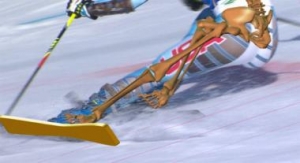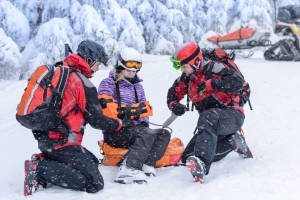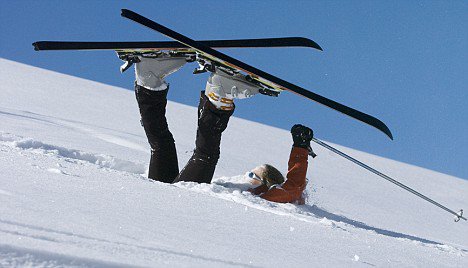3 most common Skiing Injuries and how to try and avoid them
Foot and lower leg muscle strains / tendinopathies – these are common when skiing and tend to be caused by overuse of poorly conditioned muscles. Sore and tight calves is a very common complaint on an evening after a day’s skiing. Going out for another hard day on these sore muscles increases your likelihood of straining the muscles. Depending on how you ski and how well conditioned your feet and ankles are will determine which of your muscles are going to take the brunt of this stress, and therefore where you will get sore.
For different people the symptoms can vary from pains in their feet, around the ankles or further up the lower leg. These injuries are best avoided by making sure you do a good mobility and strengthening program for a couple of months prior to your ski holiday. Making sure you have correctly fitted and comfortable boots can also help to minimise the stress on your feet and ankles. If you hire boots and are struggling after the first day or two then go back and ask for them to be refitted. Poor technique when learning to ski will also be a p otential for overloading your lower leg and foot muscles and can lead to increasing soreness throughout the week. A couple of tailored lessons can be a simple fix for this and will set you up much better for future pain free skiing.
otential for overloading your lower leg and foot muscles and can lead to increasing soreness throughout the week. A couple of tailored lessons can be a simple fix for this and will set you up much better for future pain free skiing.
Knee ligament/cartilage injuries – due to the nature of skiing and the fact that your foot is fixed to a ski can exert a lot of pressure on the knee joint when it all goes wrong. Falling whilst skiing is the biggest culprit for this type of injury so prevention is the ultimate way to best avoid these injuries. Ensuring that your equipment is in good shape and correctly fitted can help to decrease the incidence of falls and reduce risks when they do happen. If your skis are not the right length, your boots are poorly fitting or your bindings are set up wrong you will greatly increase the likelihood of trauma when you fall.
Knowing your body and your abilities will also allow you to better judge the conditions and whether you are up to the challenge when planning your day. Misjudging your abilities and being over faced is another large cause for nasty falls. This does not just apply to your ability to get from the top of the mountain to the bottom, you are at a higher risk if you are not as well versed at reading the weather, the terrain, the changing types of snow, the type of light, etc. Which all comes with years of experience. It can also include your lift skills! That is your ability to get on and off a lift without getting in a tangle, and even your ability to judge the people getting on the lift around you and whether they are likely to trip you up at the other end. A slow speed fall off a lift can have just as n  asty an outcome with the right amount of twist!
asty an outcome with the right amount of twist!
Doing a pre ski holiday leg workout is a great way to ensure your muscles and joints are conditioned to some of the stresses that they will be put under when on a ski holiday. See our article on preparing for your ski holiday. Being strong before you start could help with your ability to get yourself out of trouble.
Wrist fractures and Skiers thumb – this is another common injury that occurs whilst skiing, and again is caused by the falling over. The above points therefore all apply along with a few extras. How you fall will determine what you injure. Learning to fall without stretching out your arms or trying to put your hands down will greatly minimise the risk of wrist injuries. Skiers thumb is a ligament injury to the base of the thumbs that occurs when falling and holding onto your poles. You should always try to let go of your poles when you fall to prevent them from causing further injury.



